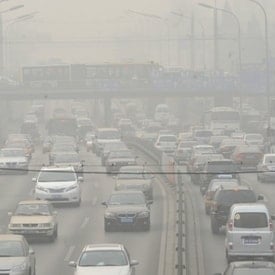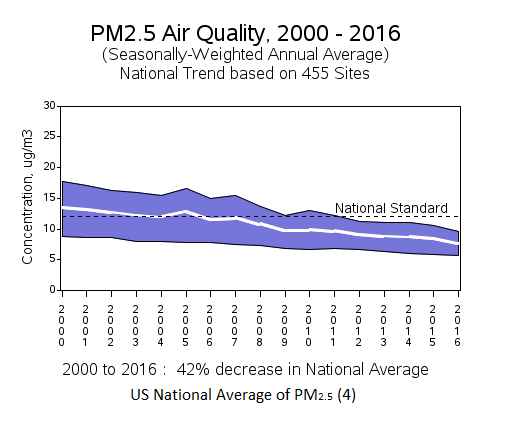
A recent study from the World Health Organization (WHO) found that 9 of 10 people live in environments that expose them daily to elevated levels of air pollution.1 This contributes to staggering 7 million deaths a year from related diseases.1The danger is largely posed by fine particles less than 10 (PM10) and 2.5 (PM2.5) micrometers which may pass through the nose and extend beyond the heart and lungs to the brain and cause health problems; these can also affect the environment.1 US Environmental Protection Agency (EPA) Method 201A is commonly used to monitor PM10, and PM2.5 for air quality control. Air is withdrawn through two sizing cyclones, and then collected on an EPA approved PTFE membrane filter. After a sample is obtained, gravimetric analysis is used to determine the particulate mass for each size fraction. The PM2.5 mass is determined by adding the mass of particulates captured on the PTFE filter and the ≤ 2.5 μm wash.2,3
Sterlitech is now offering PTFE PM2.5 membranes with the following features for air monitoring:
- EPA-approved
- Optimized for automated sampling methods
- Sequentially numbered for barcode reader
- Low tare mass for accurate gravimetric determinations
- Supported by a chemically resistant polypropylene ring to ensure the membrane stays flat
Additional advantages of the Sterlitech PM2.5 membranes are their low moisture pick-up, DOP particle capture efficiency of 99.7% or better, and pore size rating of 2.0 microns.
PM2.5 Air Quality in the U.S

In the U.S., the national average of PM2.5 has been reduced to below the national standards over the past few years.4 National Ambient Air Quality Standards (NAAQS) for PM pollution dictates the maximum acceptable level of PM present in the air.5 The EPA sets and reviews national air quality standards for PM established under the Clean Air Act to measure concentrations of PM in the air. 5 This data is used to protect public health and the environment, by ensuring that PM in the air does not exceed standard levels (current primary and secondary standards can be found in the table below).

[1] Primary standards provide public health protection, including protecting the health of "sensitive" populations such as asthmatics, children, and the elderly.
[2] Secondary standards provide public welfare protection, including protection against decreased visibility and damage to animals, crops, vegetation, and buildings.6
If you have any questions regarding PM2.5 filters or interested to learn more about these test methods, please contact one of our specialist to assist you.
References:
[1] 9 out of 10 people worldwide breathe polluted air, but more countries are taking action (2018) Retrieved from https://www.who.int/news-room/detail/02-05-2018-9-out-of-10-people-worldwide-breathe-polluted-air-but-more-countries-are-taking-action
[2] Whitelock, Derek & Buser, Michael & Clif Boykin, J & Holt, Greg. (2013). First stage lint cleaning system PM2. 5 emission factors and rates from cotton gins: Method 201A combination PM10 and PM2. 5 sizing cyclones. Journal of Cotton Science. 17. 368–379.
[3] METHOD 201A—DETERMINATION OF PM10 AND PM2.5 EMISSIONS FROM STATIONARY SOURCES (CONSTANT SAMPLING RATE PROCEDURE) (2017) Retrieved from https://www.epa.gov/sites/production/files/2017-08/documents/method_201a.pdf
[4] Particulate Matter (PM2.5) Trends (2016) Retrieved from https://www.epa.gov/air-trends/particulate-matter-pm25-trends
[5] Air Quality Designations for Particle Pollution (2017) Retrieved from https://www.epa.gov/particle-pollution-designations
[6] NAAQS Table (2016) Retrieved from https://www.epa.gov/criteria-air-pollutants/naaqs-table


![Join Sterlitech at BIO 2024 [Booth #5558]: Exploring the Future of Biotechnology](https://www.sterlitech.com/media/magefan_blog/b4.jpeg)

